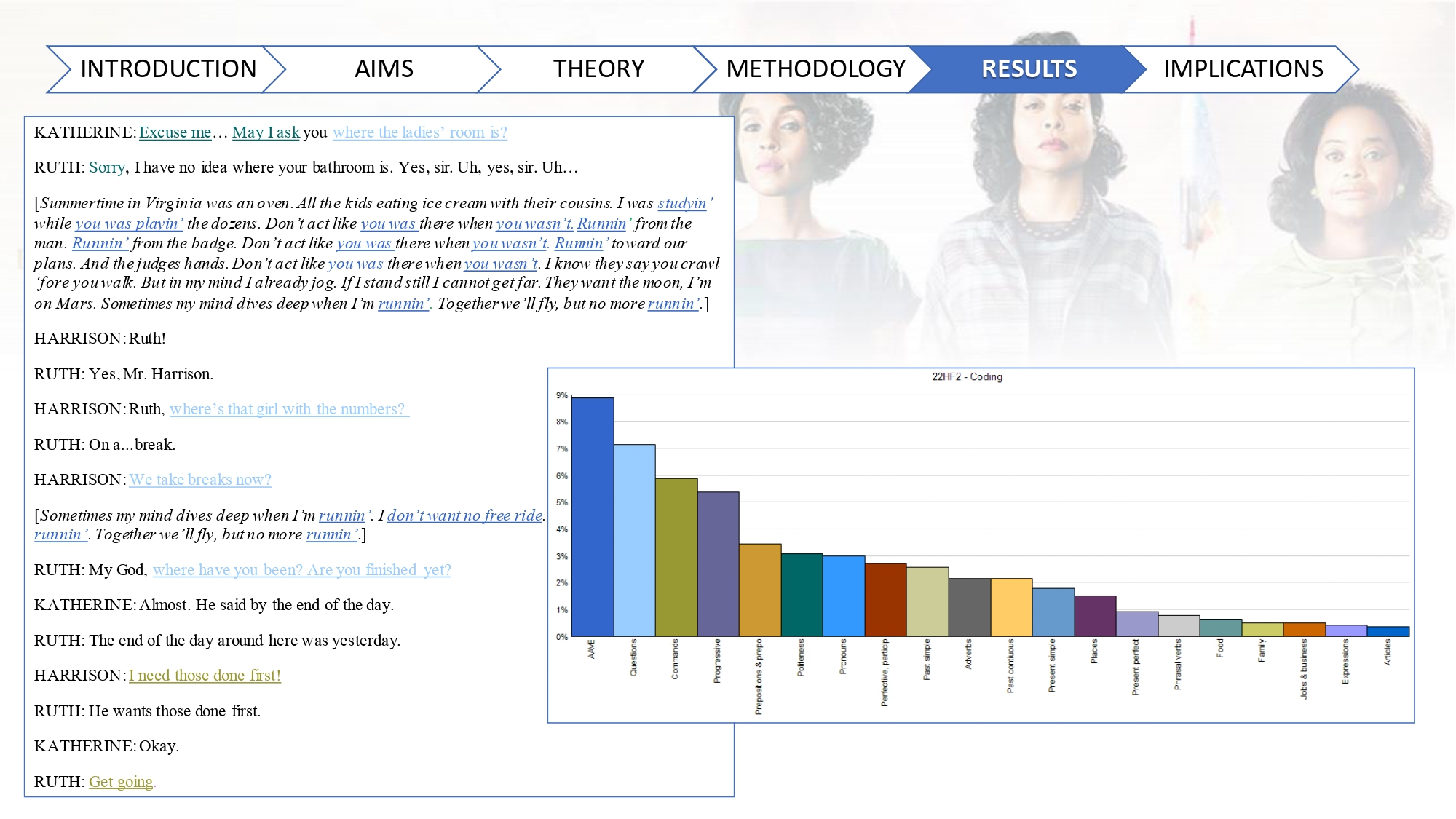AESLA 2023: Paula Wood compares affordances of audiovisual materials for the EFL classroom

Paula Wood participated in the 40th International AESLA (Spanish Society for Applied Linguistics) conference the 27th of April in Mérida (Spain). In her talk, titled “Using audiovisual materials in the EFL Secondary Education classroom: compilation and analysis of a multimodal corpus of films and series”, she explained the process of compilation of titles and scenes in her corpus CAMELLS, as well as the multimodal analysis procedure of each scene in the corpus through the qualitative analysis software NVivo. She then offered a comparison of results and potentials of two titles selected to be used in the 3rd year of Secondary Education, and offered exploitation suggestions from them.
The full abstract of Paula Wood’s talk can be consulted as follows:
Using audiovisual materials in the EFL Secondary Education classroom: compilation and analysis of a multimodal corpus of films and series
Nowadays English as a Foreign Language (EFL) teachers are starting to introduce audiovisual materials such as films and series into their lessons due to their benefits as a source of authentic language and the variety of topics, accents, and cultures they can bring to the classroom (Goldstein & Driver 2015; Donaghy 2019). Previous research has also shown the positive effects of audiovisual materials for language learning, especially vocabulary acquisition (e.g. Rodgers & Webb 2011; Puimège & Peters 2020), development of listening skills (e.g. Webb & Rodgers 2009; Feng & Webb 2020) and overall second language speech processing skills (e.g. Bobkina et al 2020; Wisniewska & Mora 2020). However, it will be argued that one of the most significant advantages of using this kind of materials lies in their multimodal nature.
In this paper I will describe the process of compilation of the corpus CAMELLS (Corpus of Audiovisual Materials for English Language Learning in Secondary), which encompasses a selection of films and series and scenes for the Secondary Education EFL classroom. The criteria and process of selection of the titles and scenes within those will be presented together with the multimodal analytical framework. As it will be shown, the multimodal analysis of the scenes selected will allow to determine salient modes and combinations of specific modes to convey meaning(s), and can be used by teachers to select, adapt and exploit them in their classes to develop students’ multimodal communicative competence (Royce 2006) and their multiliteracies (Cope & Kalantzis 2015).
Informed choices need to be made based on analyses of audiovisual materials such as the one presented in this paper to bring them into the EFL classroom and exploit them effectively. Students need to be made aware of the multiple modes in which messages are conveyed to help develop their multimodal communicative competence
Keywords: audiovisual materials, corpus, English Language Teaching, multimodal analysis, multimodal communicative competence
References
Bobkina, Jelena, Elena Domínguez Romero & María José Gómez Ortiz. 2020. Educational mini-videos as teaching and learning tools for improving oral competence in EFL/ESL university students. Teaching English with Technology. 20(3). 85-95.
Cope, Bill & Mary Kalantzis. 2015. Multiliteracies: Literacy learning and the design of social futures. London: Routledge
Donaghy, Kieran. 2019. Using film to teach languages in a world of screens. In: Herrero, Carmen & Isabelle Vanderschelden (eds.). Using film and media in the language classroom: Reflections on research-led teaching. Multilingual Matters. 3-16.
Feng, Yanxue & Stuart Webb. 2020. Learning vocabulary through reading, listening and viewing. Which mode of input is most effective? Studies in Second Language Acquisition. 42. 499-523.
Goldstein, Ben & Paul Driver. 2015. Language learning with digital video. Cambridge: Cambridge University Press.
Puimège, Eva & Elke Peters. 2020. Learning formulaic sequences through viewing L2 television and factors that affect learning. Studies in Second Language Acquisition. 42. 525-549.
Rodgers, Michael P. H. & Stuart Webb. 2011. Narrow viewing: The vocabulary in related television programs. TESOL Quarterly. 45(4). 689-717.
Royce, Terry D. 2006. Multimodal communicative competence in Second Language contexts. In: Royce, Terry D. & Wendy Bowcher (eds.). New directions in the analysis of multimodal discourse. New York: Routledge. 361-390.
Webb, Stuart & Michael Rodgers. 2009. The lexical coverage of movies. Applied Linguistics. 30(3). 407–427.
Wisniewska, Natalia & Joan C. Mora. 2020. Can captioned video benefit Second Language pronunciation? Studies in Second Language Acquisition. 42. 599-624.
